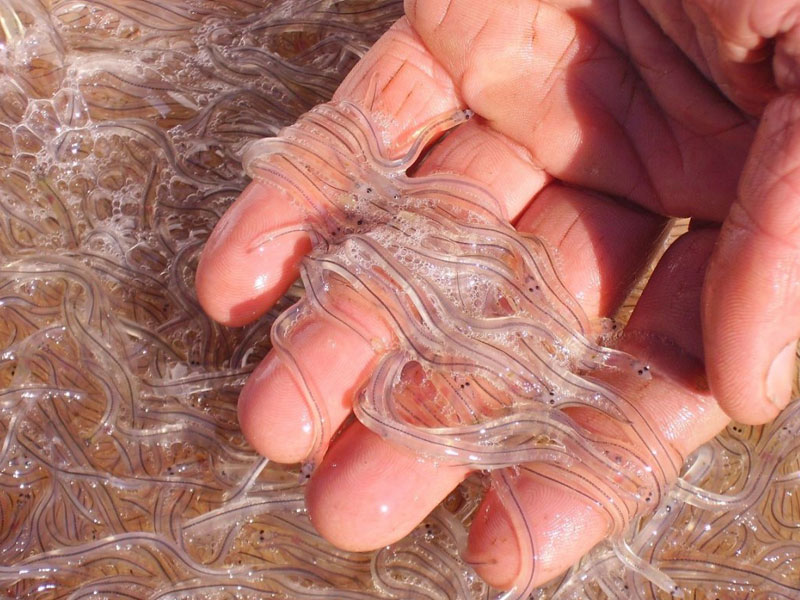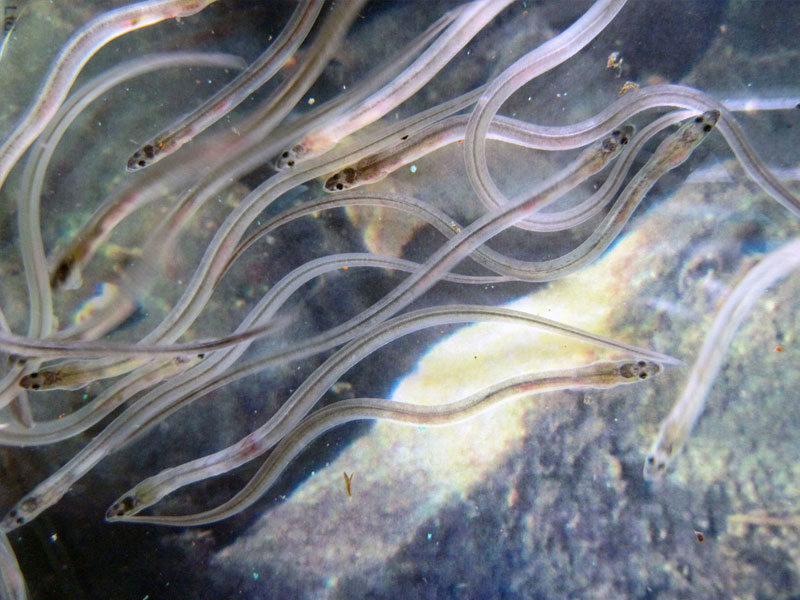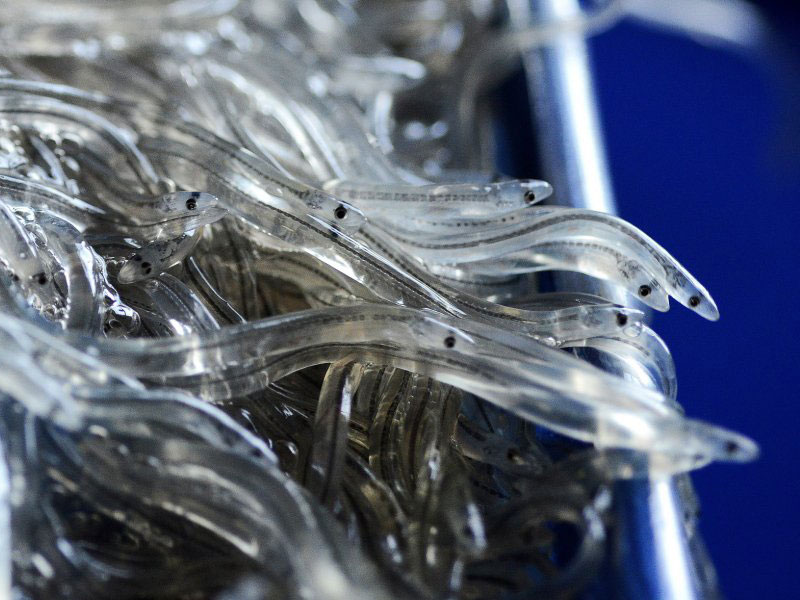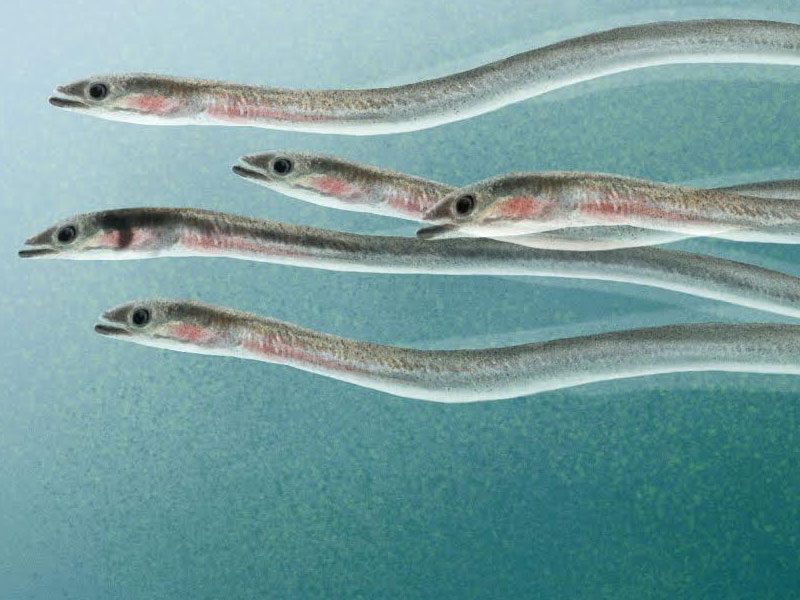The life history of the American eel (Anguilla rostrata) is both fascination and mysterious. It spawns in the Sargasso Sea and the young willow leaf-shaped leptocephalus larva disperses over great distances before it metamorphoses into a transparent glass eel. This stage reaches the estuaries of North America where it typically ascends rivers and streams as an elver, becoming progressively more pigmented as the run progresses. This stage is followed by the juvenile or yellow eel, and finally by the silver or maturing adult. Eel physiology and ecology are still not completely understood, although much has been learned since the early 1900s.
Based on oceanographic surveys and entrance times into rivers, estimates of migration time to North America of young American eel range from 250 days to one year, corresponding with a peak spawning time of February and March. Many studies have described seasonal sizes of European glass eels and elvers entering estuaries, but similar long-tem data sets for the American species are uncommon. Elvers enter estuaries along the coast of North America progressively from south to north, becoming larger with increasing latitude, and for many area, sizes have been recorded.
In eel culture, elvers are collected along the Pacific coast from December to April. Eel culturists are often troubled with scarcity of young eels because of fluctuations in abundance from year to year. The demand for elvers has rapidly increased in recent years proportionally with the increase of culture ponds. Three counter plans have been adopted to solve the problem: 1) improvement of survival rate of elvers, 2) importation of elvers from foreign countries, and 3) establishment of spawning techniques.
Heating apparatus to increase winter temperatures in ponds is proving to be effective for improving the survival of eels. This apparatus includes two main systems, heating and a circulating filter system.
In the latter, the water is filtered and re-circulated back to the culture ponds. In the process of circulation, the water is heated to a constant temperature. Although this apparatus entails high costs, survival rates often reach 95%.
Recently, elvers of other eel species have been imported from various countries such as France, Philippines, and New Zealand, in 1969, 25.2 tons of elvers were stocked in Shizuoka Prefecture, of which 9 tons were imported from various countries. Foreign species have different habitat needs than native species; therefore, satisfactory results are not always obtained. Culture methods suitable for them are being developed.
Establishment of spawning techniques is an extremely difficult problem because the physiology and spawning behavior of adults and the life history of hatchery fry are not well understood. Several public institutions are wrestling with this problem, under the guidance of T. Hibiya, Professor of Faculty of Agriculture of University of Tokyo.
The prevention of epidemic disease is another important problem in eel culture. It is difficult to keep accurate records of mortalities in eel culture, because turbidity of the pond water inhibits finding or seeing dead fish. Attempts at estimating losses in Shizuoka Prefecture have revealed a seasonal pattern. That is, the mortality begins to increase in March and reaches its peak in April or May.




